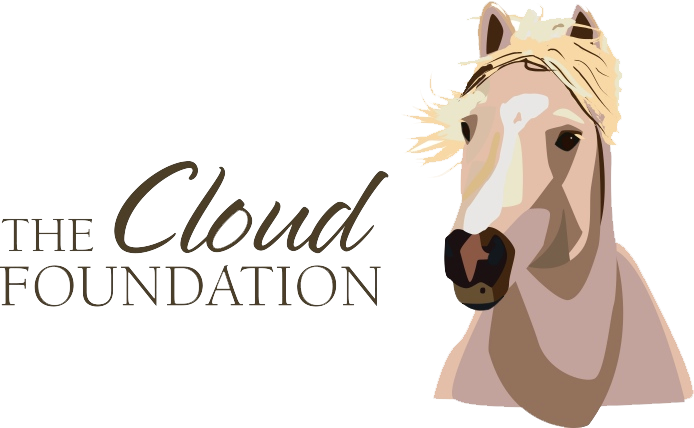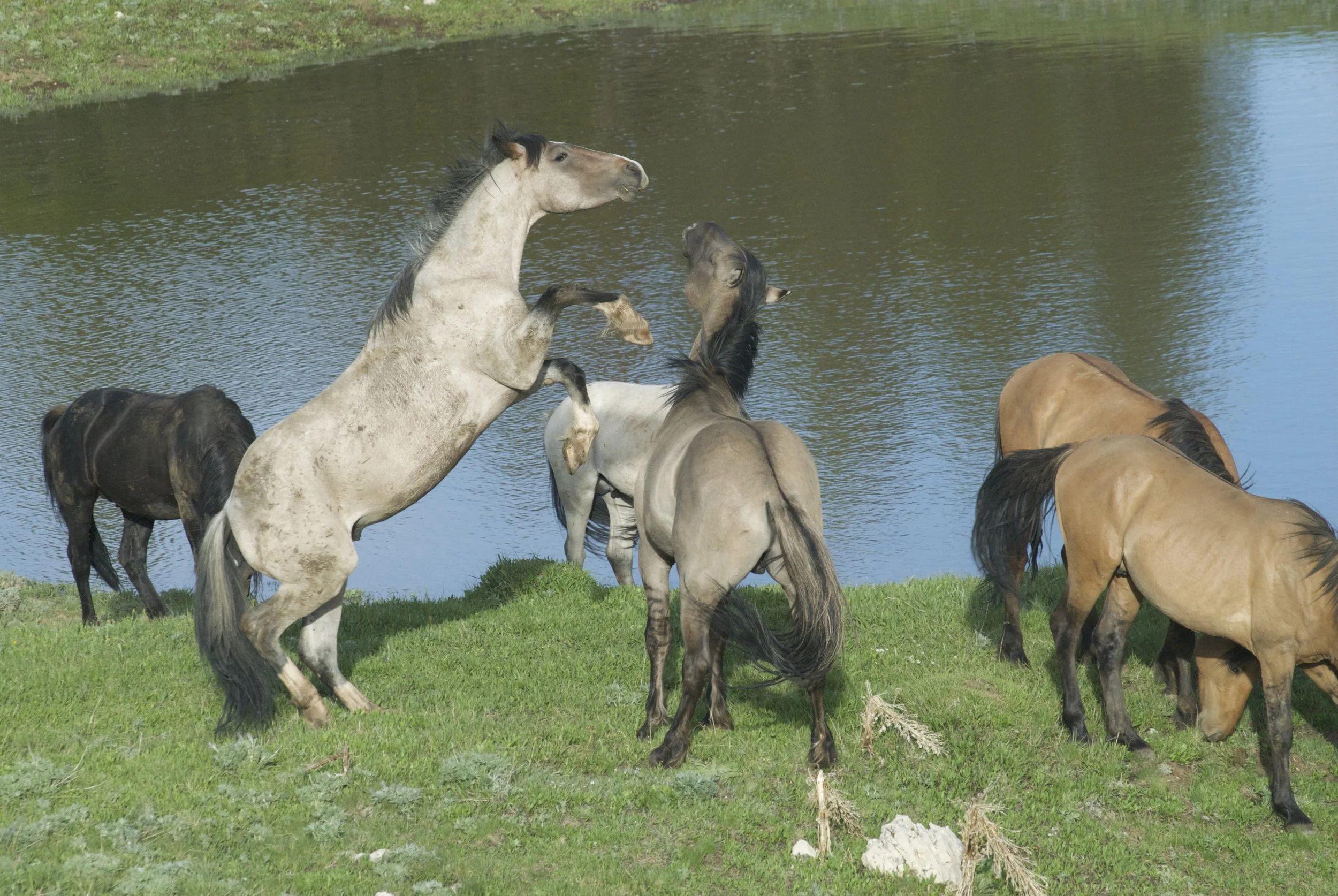Washington Post Publishes Pro-Slaughter Opinion
Eating Our Wild Horses? A Dangerous, Misguided Proposal!
TCF’s Rebuttal to the Washington Post’s Pro-Slaughter Opinion Piece by Tamar Haspel
“Promoting the consumption of federally protected animals to clean up a mess created by decades of biased policy isn’t bold thinking—it’s moral laziness.”
No, We Shouldn’t Eat Wild Horses.
We Should Stop Subsidizing the Real Problem.
Tamar Haspel’s recent Washington Post article, “The Case for Eating the Wild Horses Out West,” offers an eye-catching solution to a “problem” that’s been deliberately skewed and misrepresented to the public for decades. The real issue isn’t wild horses and burros overrunning the landscape. The issue is livestock grazing—publicly subsidized and poorly managed—being prioritized on lands that are legally set aside for wild horses and burros.
And no, the solution is not to eat the wild horses.
Let’s take a look at what’s really going on.
1. Wild Horses Aren’t Overpopulated.
Haspel leans hard on the idea that there are “too many horses.” But that claim only holds up if you ignore scale—and the facts:
Wild horses and burros occupy just 12% of BLM-managed lands.
The current population is around 70,000, give or take.
Meanwhile, more than 1.9 million privately owned cattle and sheep graze these same lands—at rock-bottom fees, far below market value.
That’s over 25 livestock for every wild horse.
So, before we talk about rounding up, removing, or eating our wild horses, maybe let’s deal with the actual population and habitat degradation culprits: cows and sheep being raised for profit on public lands at the taxpayer’s expense?
2. The AML Myth: Arbitrary, Not Scientific
The centerpiece of the “too many horses” argument is something called AML—Appropriate Management Level. Sounds technical. It’s not.
These numbers were set years ago, often with direct input from the ranchers who lease grazing allotments on the same lands. They were never based on transparent, peer-reviewed ecological science.
AMLs regularly permit just 1 wild horse per 1,200+ acres or less with some “herds” set at numbers so low that they are not healthy or genetically viable. How is an “appropriate management level” of 7 sustainable, or meant to keep “healthy animals” in mind? It’s not. It can be reasoned that success was and is not the plan for these herds.
In most cases, hundreds to thousands of livestock are allowed to graze those same acres. Some for a limited time (usually during crucial “green-up” months) and some year-round.
Most HMAs have
- no modern peer-reviewed or scientifically based environmental analysis
- no updated carrying capacity studies
- no consistent method for balancing actual ecosystem needs
- limited-to-no on the range management
Rather than food recipes, what we really need are independent, science-based studies of each wild horse and burro habitat—and until those happen, AML is little more than a political tool conveniently masquerading as science.
3. Slaughter Is Not a Solution. It’s a Betrayal.
The Wild Free-Roaming Horses and Burros Act of 1971 isn’t ambiguous. These animals are protected. Period. Killing them for consumption is not “management”—it’s a violation of both the spirit and letter of the law.
Suggesting we put them on the menu because we’ve mismanaged them off the range? That’s not pragmatic. It’s a failure of stewardship dressed up as sustainability and a way to boost readership.
Let’s be clear: these aren’t excess animals. They’re scapegoats.
4. The Ethics Are Clear. Most Americans Get It. Tamar Haspel Does Not.
Poll after poll shows that over 80% of Americans oppose horse slaughter. These animals are not viewed as livestock; they’re part of our national heritage—celebrated in literature, film, and the cultural memory of the American West.
And from a food safety perspective? Most domestic and wild equines have been exposed to drugs like phenylbutazone (bute) and other vaccines, which are banned in food animals. They were never intended to be part of the food chain—and trying to shove them into it now is dangerous at best, deceitful at worst.
5. Yes, There Are Ecological Concerns. No, Horses Aren’t the Cause.
Haspel mentions habitat degradation—and she’s not wrong to be concerned. But she is wrong about the source.
Livestock graze year-round (on and off our public lands), compact soils, destroy riparian areas, and outnumber wild horses dramatically.
Horses tend to move across large ranges, graze more selectively, and do not typically cluster around sensitive wetlands.
Most studies that blame horses fail to separate out livestock impacts—making their conclusions questionable at best.
If we want to heal rangelands, the first step is simple: end welfare grazing on wild horse and burro lands. Then reassess.
6. There Are Humane, Science-Based Alternatives
Slaughter and consumption are not the only tools available—they aren’t even necessary (or morally palatable) ones.
PZP fertility control works. It’s safe, reversible, and already in use. The only thing missing is adequate investment and deployment.
Adoption can be viable—but only when done responsibly. The BLM’s monetary incentive program created a pipeline to kill pens. By implementing other incentives (like training resources or veterinary vouchers), adoption becomes part of the solution – but only a limited one. With so many horses and burros removed each year, the private market cannot absorb them all. This leaves far too many formerly wild horses and burros as unwitting captives – freedom stolen, forever interred away from their families and the lands they once roamed.
On-the-range management—like what’s happening in the Pryor Mountains—isn’t just possible. It’s proof that alternatives work.
This isn’t a question of feasibility. It’s a question of political/governmental will.
7. Fix the System. Don’t Blame the Horses.
Want to make a real difference? Here’s where to start:
End commercial livestock grazing on wild horse and burro ranges. These public lands were legally designated for wild equids—not subsidized cattle.
Reestablish herds in the Herd Areas (HAs) that the BLM has “zeroed out” over the years—often without public input or scientific justification. These lands still belong to the public, and they should be restored to their original purpose.
Commission independent ecological studies to create real, science-based AMLs—numbers that reflect current conditions, respect the law, and support healthy, genetically viable herds.
Until then, calls for drastic population control – and certainly those for slaughter – on the grounds of overpopulation and habitat destruction is dishonest.
Clarifying the Real Issue: It's Not About “Too Many” Cattle—It’s About Misguided Subsidies
The problem isn’t just that there are too many cows or sheep on public lands—it’s also that these animals are part of a federally subsidized welfare ranching system that costs U.S. taxpayers hundreds of millions of dollars annually. Ranchers who utilize public grazing pay just $1.35 per animal unit month (AUM)—a fraction of fair market value—to graze their private livestock on public lands, including lands designated for wild horses and burros.
Despite this massive government handout, livestock raised on public lands contributes only about 2–3% of America’s beef supply. In other words, taxpayers are footing the bill for a program that provides minimal national benefit while destroying ecosystems and displacing federally protected wild horses and burros.
If we’re serious about managing public lands responsibly, the first step must be to end these subsidies—or at least remove commercial livestock from WHB-designated ranges—and restore those lands to the animals they were set aside to protect.
“Food” for Thought
There’s no denying that public land management is messy. But promoting the consumption of federally protected animals to clean up a mess created by decades of biased policy isn’t bold thinking—it’s moral laziness.
Wild horses and burros are not the problem. Not even the cows or sheep. It’s people. People are the problem.
The Cloud Foundation (TCF), a 501(c)(3) nonprofit, has been at the forefront of wild horse advocacy since its inception in 2005. TCF was founded by Emmy award-winning filmmaker Ginger Kathrens, creator of three acclaimed PBS Nature documentaries that followed the wild stallion Cloud throughout his life. Dedicated to protecting wild equine behaviors and restoring herds to zeroed-out Herd Areas, The Cloud Foundation also advocates for equitable forage allocation within Congressionally designated Herd Areas.
Bachelors play near the big water hole atop the Pryor Mountain Wild Horse Range. Photo TCF


